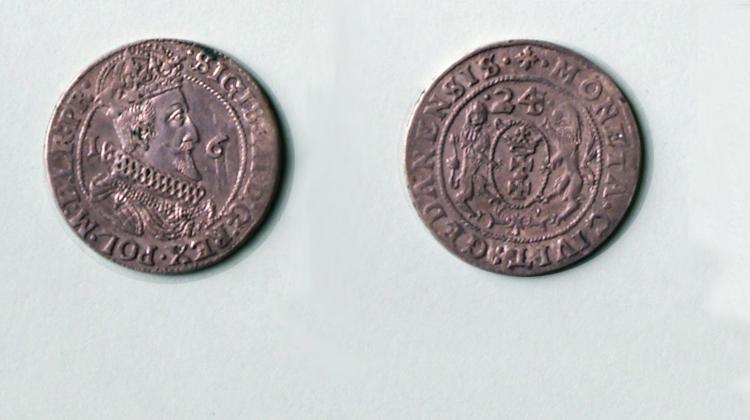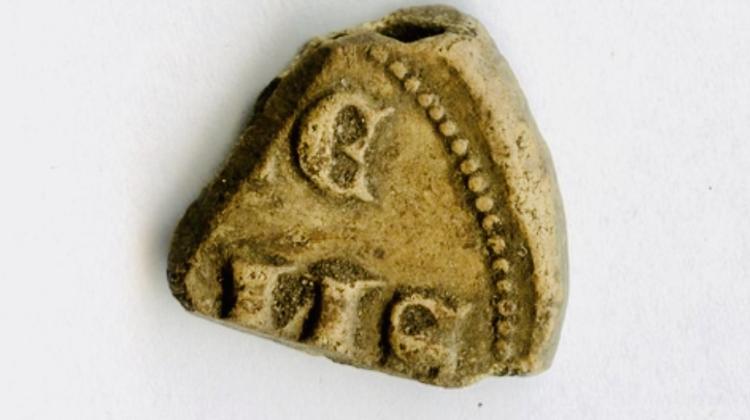Człuchów/ Archaeologists discovered coins hidden from the Swedes ... more than 350 years ago
 An ort of George William, duke of Prussia, from 1622. Photo by M. Kurdwanowski
An ort of George William, duke of Prussia, from 1622. Photo by M. Kurdwanowski
Eighteen silver coins from the mid-seventeenth century were found by archaeologists from Warsaw during the excavations at the Człuchów castle (Pomeranian province). The coins were probably hidden during the Deluge in 1657, the discoverers believe.
The coins are preserved in very good condition. Until the end of September, they can be seen at an exhibition at the Regional Museum in Człuchów.
"Because of their great value in the seventeenth century, they are rare archaeological finds" - said the research leader Dr. Michał Starski from the Institute of Archeology of the University of Warsaw.
Among the coins are orts of Sigismund III Vasa, John Casimir and George William, Duke of Prussia, and one 10 Kreuzer coin of the Austrian Archduke Leopold V. Orty were quarter-thaler coins with a diameter of 2.5-3.0 cm. Dr. Starski explained in an interview with PAP that this type of coin was introduced in the early 17th century for foreign trade. According to the archaeologist, initially, a dozen or so chickens could be bought for one coin of this type. By the mid-eighteenth century, the value of the coin had decreased by half, also due to the influx of American ore, the researchers noted.
Archaeologist Maciej Kurdwanowski discovered the treasure inside the defensive tower located i the second ward of the Człuchów castle. The structure was standing at one of the gates leading to the third ward. The tower functioned until the end of the 18th century.
Coins were most likely hidden during the siege of the castle by the Swedish troops during the Deluge around 1655-56.
"The Człuchów fortress resisted the Swedes for a long time. The siege lasted for several months - ultimately, in winter of 1655/56, when the surrounding lake fortress froze, the invaders captured it. The defenders were unable man the whole, very extensive system of walls" - said Dr. Starski.
According to Dr. Starski, the treasure could have been a part of a larger collection - in the beginning of the 20th century historian Konstanty Kościński wrote in his notes that a worker working at the cemetery had come across a treasure of coins. He was said to be able to emigrate to America thanks to the discovery.
Scientists will bring the coins to Warsaw in late September when, after they conclude their digging season. Then they will also process them scientifically (they will determine, among other things, were the coins were minted), and the coins will undergo careful conservation. Then the coins will return to the Człuchów exposition.
Archaeologists from the University of Warsaw have been conducting excavations in Człuchów since 2008. The project i financed by the local city council. So far, the researchers have examined the High Castle, where they unearthed the courtyard and the cellars of the old castle wings, built by the Teutonic Knights in the fourteenth century. After the revitalization in 2014, that part of the castle was made available for tourism. In this and previous seasons, archaeologists have focused their efforts on the study of the wards, where they have found a treasure in the form of coins. (PAP)
PAP - Science and Scholarship in Poland, Szymon Zdziebłowski
szz/ zan/ kap/
tr. RL
Przed dodaniem komentarza prosimy o zapoznanie z Regulaminem forum serwisu Nauka w Polsce.


















